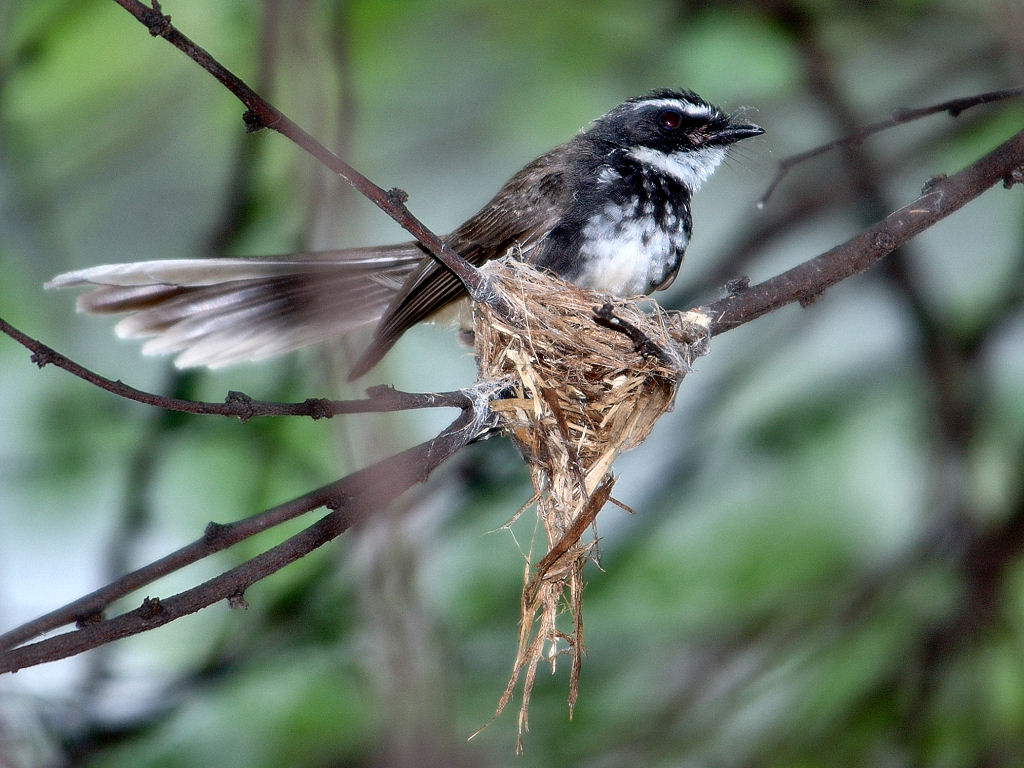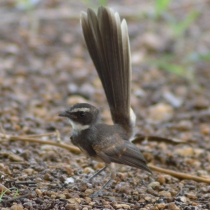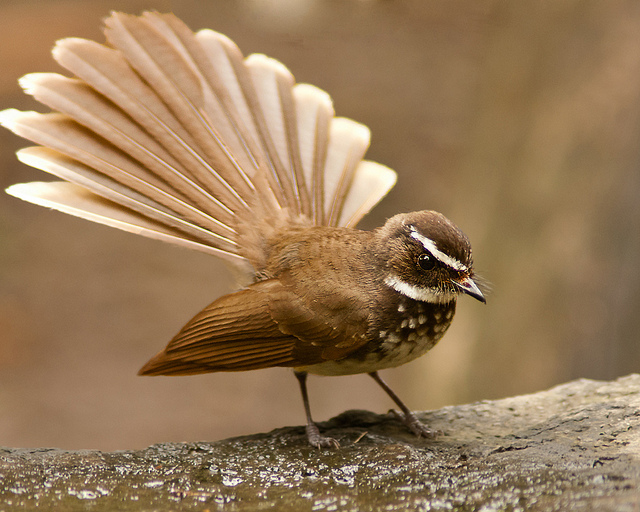
Rhipidura albicollis
TAXONOMY
Platyrhynchos albicollis Vieillot, 1818, Bengal, India. Eleven subspecies.
OTHER COMMON NAMES
English: White-throated fantail flycatcher; French: Rhipidure а
gorge blanche; German: Weisskehl-fдcherschwanz; Spanish:
Cola de Abanico de Garganta Blanca.
PHYSICAL CHARACTERISTICS
6.9–8.1 in (17.5–20.5 cm); 0.3–0.45 oz (9–13 g). Mostly gray
with white throat, brow, and tip of tail.
DISTRIBUTION
Northeastern Pakistan, India, southeastern Tibet, southern
China, Myanmar, Thailand, Asia, Peninsular Malaysia, Sumatra,
Borneo. Foothills and adjacent plains up to 10,000 ft
(3,000 m).
HABITAT
Inhabits broad-leaved evergreen forest and can be found locally
in human-modified areas such as bamboo, parks, secondary regrowth,
and wooded gardens.
BEHAVIOR
This is a typical fantail in its
BEHAVIOR
—restless, constantly fanning
its tail, and conspicuous. It is a bird of the understory and
middle growth. In winter, it exhibits marked altitudinal migration,
moving from higher elevations to foothills and plains.
The song consists of thin, high-pitched notes.
FEEDING ECOLOGY AND DIET
Works along branches, as well as outside of foliage, feeding on
small flying insects it disturbs. It may be encountered singly, in
pairs, or as part of mixed hunting parties.
REPRODUCTIVE BIOLOGY
The breeding season varies throughout the range, from
Feb.–May to Mar.–Aug; two broods may be raised. Both sexes
build the nest and incubate the three spotted eggs. The small
cup-shaped nest is made of fine grass stems held together by
an external coating of cobwebs; it has a dangling “tail” of
grasses below. Incubation period 12–13 days; fledging 13–15
days.
CONSERVATION STATUS
Not threatened.
SIGNIFICANCE TO HUMANS
None known.
Other popular Animals
Photo Gallery of - White-throated fantail




 Animalia Life
Animalia Life